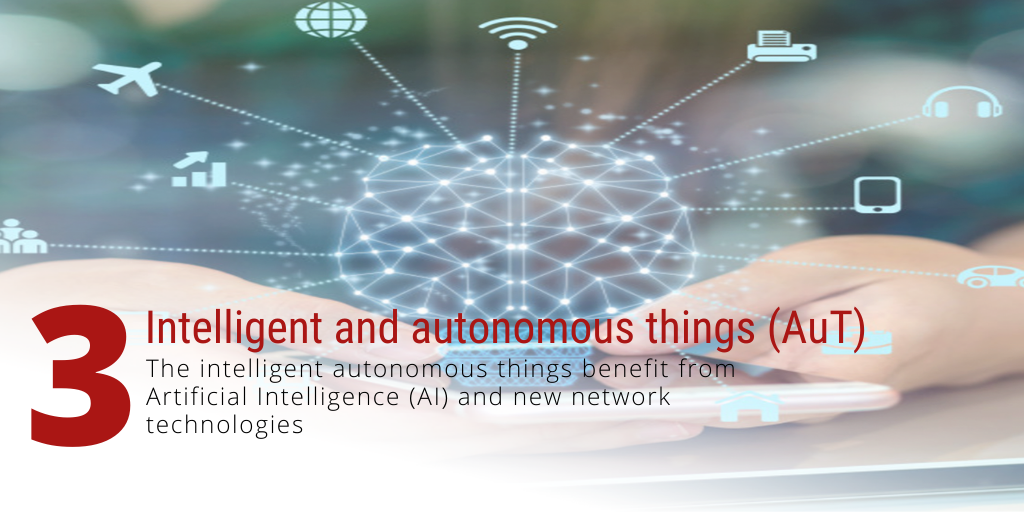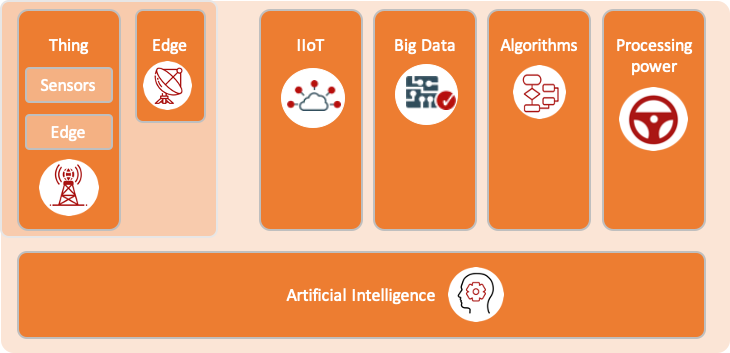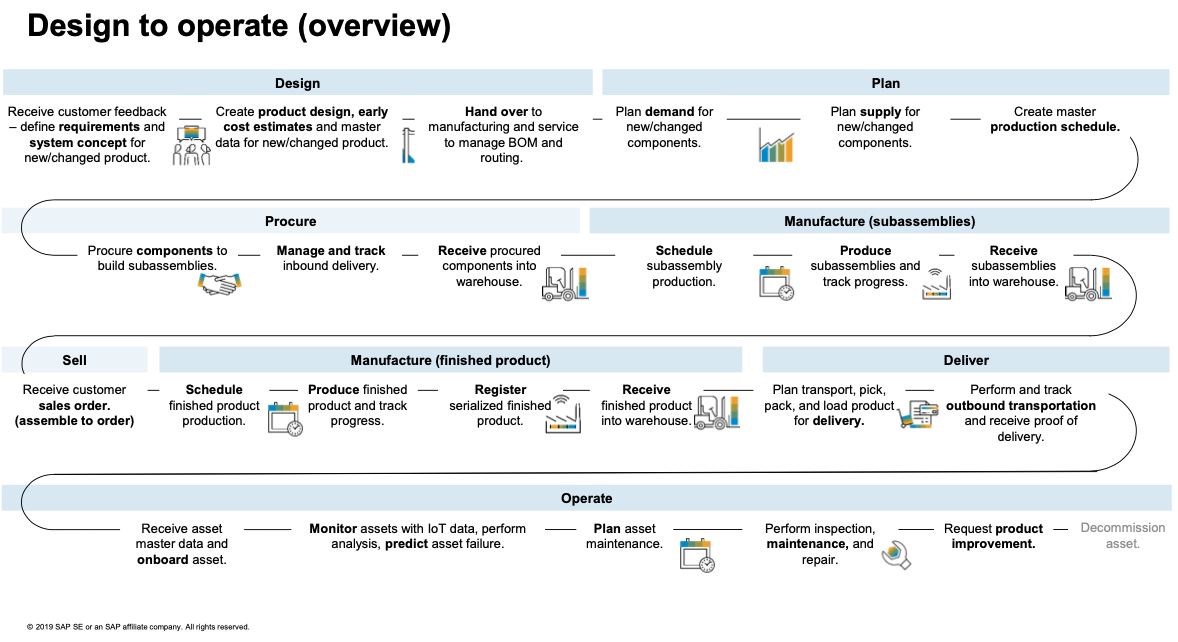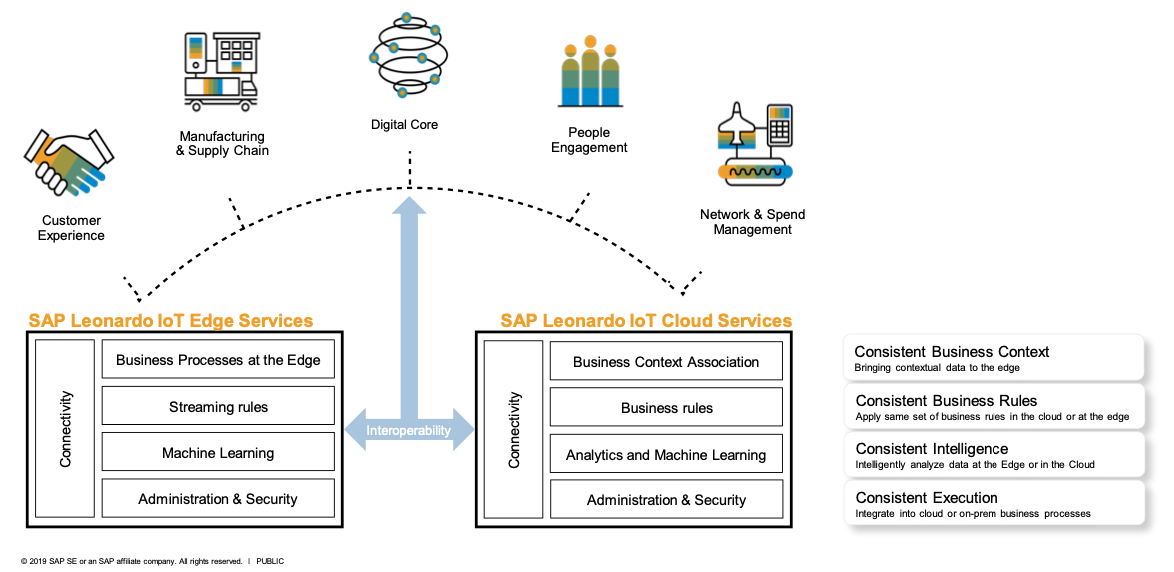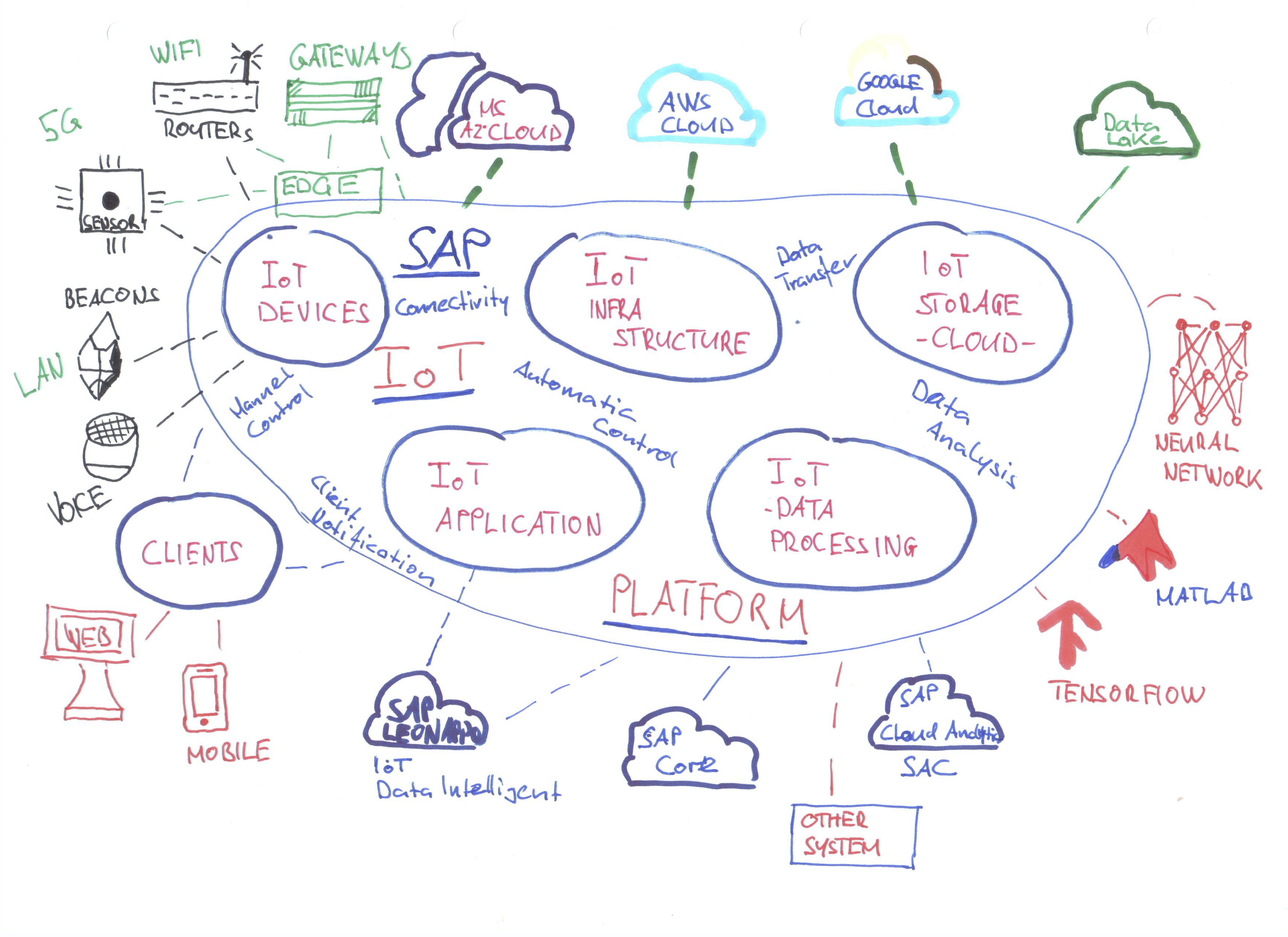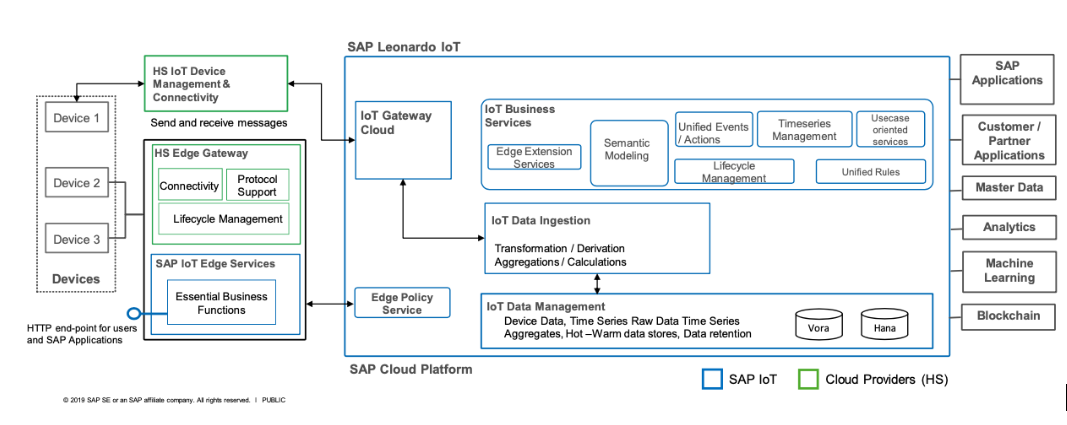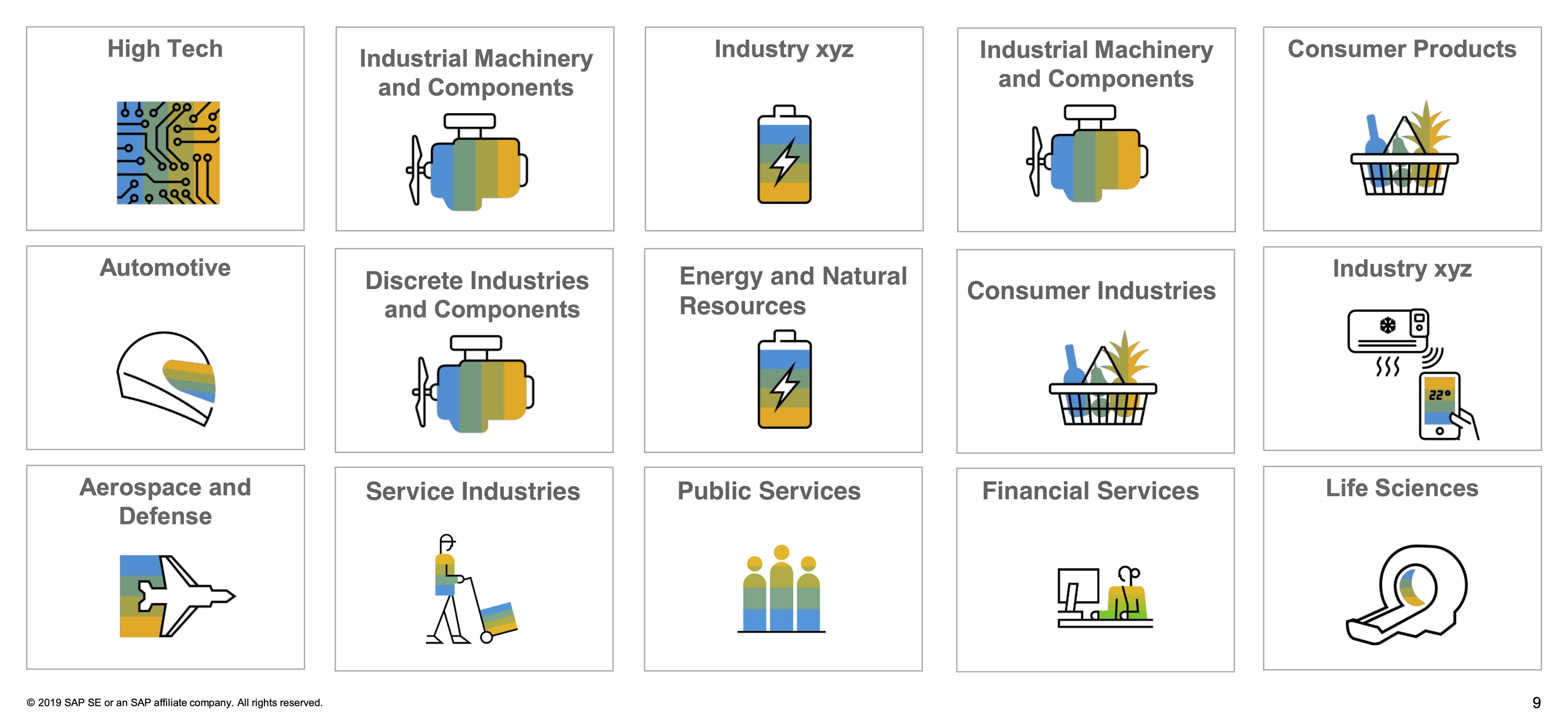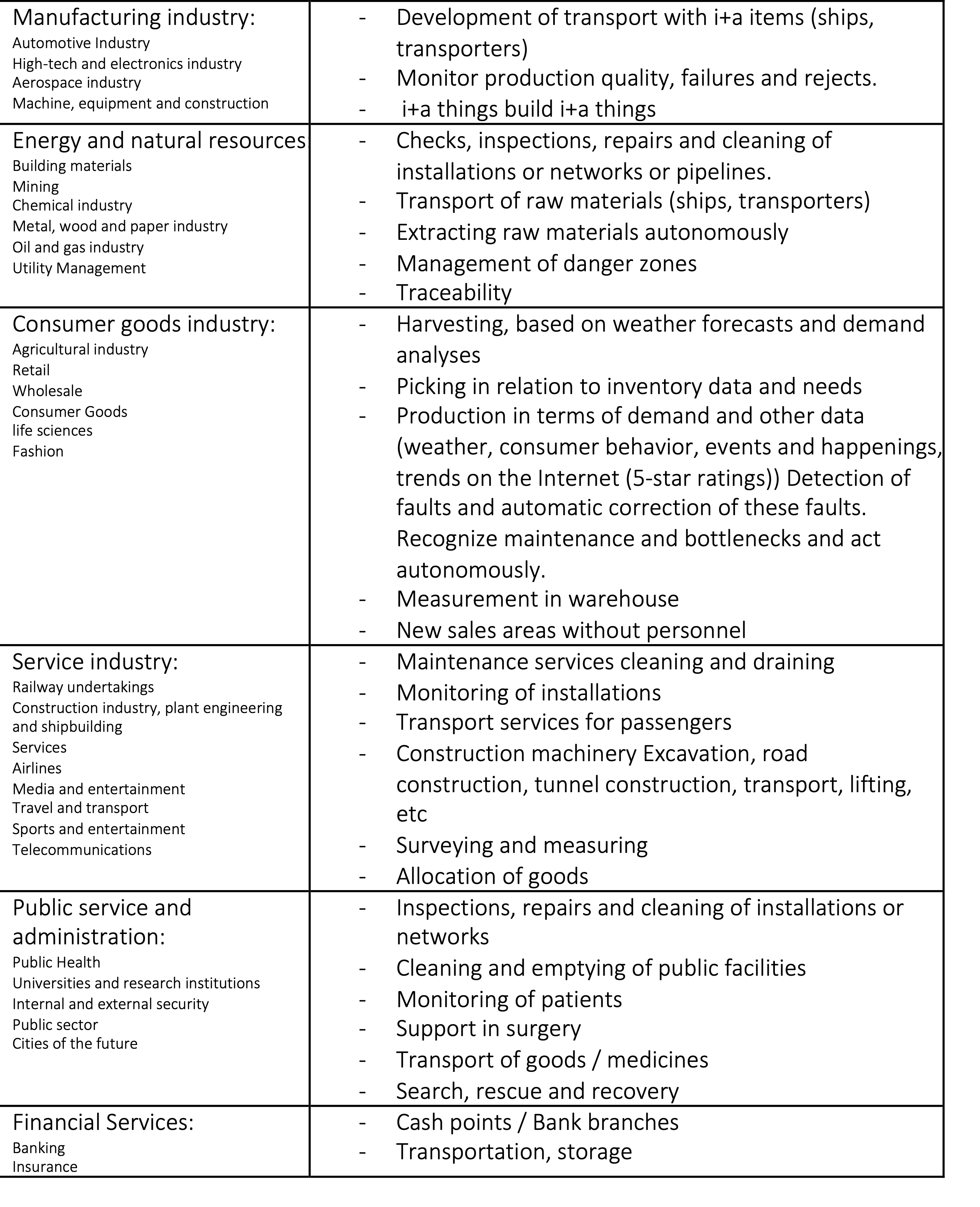
Aprende en Comunidad
Avalados por :





¡Acceso SAP S/4HANA desde $100!
Acceso a SAPRevolutionizing Industries with Intelligent and Autonomous Things: A SAP Portfolio Overview
- Creado 01/03/2024
- Modificado 01/03/2024
- 114 Vistas
0
Cargando...
The Introduction in the 6 Digital Tech Trends. Read the Blog Series Introduction
Intelligent autonomous things (AuT) will benefit from Artificial Intelligence (AI) and new network technologies.
Autonomous things can act in the form of a human-machine hybrid combination or completely alone as a machine. The combination of several intelligent and autonomous things in one process sequence or simultaneously - will increase in the future.
SAP IoT portfolio
For years, production lines in industry have been connected to each other, the control system monitors and controls production. This requires a great deal of data. What happens to it? The OEE or other key figures are calculated. For a few years now, the OEE data have been used for this purpose. But... if the AI component is added, the data is matched with algorithms autonomously. If we then add the things that are created in the plant and fill them with data and the AI as they are created, we integrate things in the plant to build things again or integrate things into new networks and processes. Then semi- or fully autonomous digital ecosystems emerge.
Things respond to actions, stages or messages from other things.
Desgin to operate
Autonomy also means processing data directly and quickly. Edge computing" plays an increasingly important role in this. This means that information, services and applications can once again be brought closer to people and devices and used. Intelligent devices can process and use data directly and autonomously.
Instead of sending all the information collected by cameras, scanners, handheld terminals or sensors to the cloud for processing, edge devices perform some or all of the processing themselves, to the source where the data is collected.
SAP Leonardo IoT Edge Servies
Edge services provide powerful micro-services on the edge. Featuring robust offline capabilities that help you gain domain-specific insight, monitor real-time events and actions, and execute business processes locally, even when connectivity is disrupted.
The appropriate hardware must be provided to meet Edge Gateway requirements. Today, there are several vendors with different hardware and service deployment options.
These are now integrated into the following stand-alone environments:
· Stand-alone industrial robots
· The autonomous drones
· Means of transport without a driver
· Lidar and radar technology
· Various household items
· Connection of autonomous things
It is important to define a complete and precise architecture with intelligent and autonomous things, their hardware (sensors, edge hardware), applications, platforms, resources, networks, energy, and communication. To this architecture we can add the technological trends of the previous blogs, networks, and communication (WLAN, LAN, 5G), Experience Environment for the interaction of intelligent and autonomous things or their platforms, Hyperautomation for data acquisition and process automation.
Think about what you can use, where and how! Different technologies help for different challenges, but not all are suitable for all challenges.
IoT Landscape
Take the SAP products as an example:
SAP Leonardo IoT
In other industries, apart from the manufacturing industry mentioned above, the intelligent and autonomous things now built can be used in new digital ecosystems such as:
Applications like Smart Supply Chain, Smart Production, Smart Home, Smart City and many other smart little things are being implemented now more and more.
SAP industries portfolio
But what if I now connect Smart Supply Chain, Smart Logistics and with Smart City with each other autonom
Pedro Pascal
Se unió el 07/03/2018
Facebook
Twitter
Pinterest
Telegram
Linkedin
Whatsapp
Sin respuestas
 No hay respuestas para mostrar
Se el primero en responder
No hay respuestas para mostrar
Se el primero en responder
© 2026 Copyright. Todos los derechos reservados.
Desarrollado por Prime Institute
Hola ¿Puedo ayudarte?

